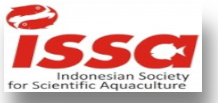Toxicity of mercury (Hg) on survival and growth rate, hemato- and histopathological parameters ofOreochromis niloticus
Abstract
Heavy metals are serious pollutants of the aquatic environment because of their environmental persistence and ability to be accumulated by aquatic organisms. Oreochromis niloticus exposed to 0, 0.16, 0.5, and 1.0 ppm Hg for 30 days. The aim of this study was to determine the influence of mercury in water on survival rate, growth rates, hematological, and histological parameters of Oreochromis niloticus. This study was conducted from Mei to June 2009. The experimental design was arranged in completely randomized design with four treatments and three replications. Stock density was 8 fish/aquarium with mean initial body weight was 15.70±1.13 g. Growth and survival rates of test fish were decreased with increasing the Hg concentration. Red blood cell (RBC) count, haematocrit content, and haemoglobin content decreased when compared to the control. The number of white blood cells (WBC) increased in mercuric treated fish. The results are statistically significant at p<0.05 level.
Keywords:mercury, survival and growth rate, hematology, histopathology, Oreochromis niloticus
Downloads
Authors who publish with this journal agree to the following terms:
- Authors retain copyright and grant the journal right of first publication with the work simultaneously licensed under a Creative Commons Attribution License that allows others to share the work with an acknowledgement of the work's authorship and initial publication in this journal.
- Authors are able to enter into separate, additional contractual arrangements for the non-exclusive distribution of the journal's published version of the work (e.g., post it to an institutional repository or publish it in a book), with an acknowledgement of its initial publication in this journal.
- Authors are permitted and encouraged to post their work online
 (e.g., in institutional repositories or on their website) prior to and during the submission process, as it can lead to productive exchanges, as well as earlier and greater citation of published work (See The Effect of Open Access).
(e.g., in institutional repositories or on their website) prior to and during the submission process, as it can lead to productive exchanges, as well as earlier and greater citation of published work (See The Effect of Open Access).






















